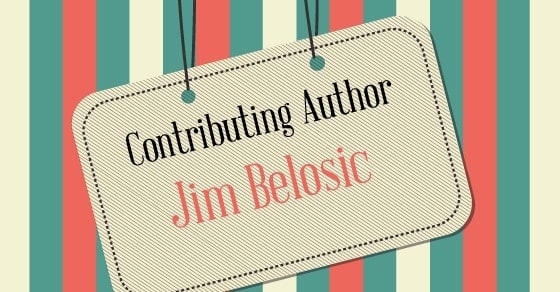Today, we here at Zen Media are excited to bring you a blog post from contributing author Jim Belosic. Jim Belosic is the co-founder and CEO of ShortStack, a software application company that makes apps for Facebook, websites, and mobile.
In the past few years, content marketing has become the hottest form of marketing out there. But make no mistake: Content marketing is not hot because it’s trendy, it’s hot because it works.
For the last year or so, my company, ShortStack, has relied solely on content marketing. My decision to shift away from advertising and toward content marketing was based on one simple idea: I’d rather invest my company’s hard-earned dollars into awesome people instead of in ads that died as soon as I stopped funding them.
People have the ability to produce thought-provoking and informative blog posts, infographics, PDFs and eBooks that will live on the web forever once published. My favorite metaphor is that the content my team produces functions like solar-powered cars, while ads are like gas-guzzlers. Original content contributes to better search result rankings and also has the power to establish brand representatives within the company as experts in our industry. These are all the things I wanted for my growing company and what I’ve learned other businesses want, too.
From the beginning, our content marketing strategy has been the same. Create content that is first and foremost valuable to readers. Everything has to be written from a genuine place of giving. This approach to creating and sharing our content has worked really well for us. We have gained a solid blog readership and created some great brand awareness for Shortstack. It was not until recently that we decided to do something that would take our content marketing to the next level:
We combined our content marketing efforts with a tightly focused Facebook advertising strategy.
This is what I like to call hybrid content marketing.
In doing this, we’ve learned a couple of key lessons that we think anyone who’s invested in content can benefit from:
1. Only put money behind your most value-producing resources. My company uses Improvely links to track conversions (people who sign up for our service) on the resources we share. With Improvely, we are able to know which of our resources are organically converting the most readers to ShortStack users — these are the resources we decide to feature in our Facebook advertisements.
The Lesson: Don’t spend money promoting every piece of content your business creates. My company only puts advertising dollars behind around 10 percent of our content. We host the other 90 percent on our blog Socially Stacked and it gets organically shared from there.
2. Ads don’t always need a glaring call to action (CTA). If you didn’t watch the “First Kiss” video that went viral in March 2014, you probably read about it. It turned out that the video was made by the clothing label Wren.
It was definitely not salesy. And unbeknownst to the millions of people who watched the video, it was a campaign film for Wren’s Fall 2014 collection. Despite the video having zero CTAs, traffic to Wren’s website went up to 14,000 percent (96 percent of those visitors were new to the site) and sales in the online store were over 13,600 percent higher than they were during the week before the video was released, according to Business Insider.
While Wren’s video is a bit of an advertising anomaly it proves a point: Subtlety in advertising can work to your brand’s advantage. Just take a look at the two Facebook ads below and ask yourself, “Which ad would I be most likely to click on?”
Ad #1: Hard selling.
Ad #2: Information sharing.
I bet most people are going to be more attracted to the latter advertisement. Even though it doesn’t have a strong CTA like “Click here!” or “Sign up now!” it’ll likely produce more clicks because it offers value in the form of a video tutorial.
The Lesson: A click-worthy ad doesn’t need to be “in your face.”
If your business has yet to marry your content marketing with Facebook advertising and experimented with some hybrid content marketing, what’s holding you back? Share with me your responses in the comments below.




